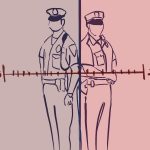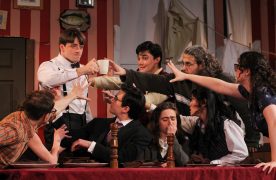The National Museum of African American History and Culture is set to open in Washington D.C. this September, The New York Times reported on Sunday. The museum will be “a beacon that reminds us of what we were; what challenges we still face; and point us towards what we can become,” according to its website.
The Times wrote, “Even [when] depicting the worst oppression, [the curators] have tried to emphasize individual stories of the people who suffered.”
Some artifacts the museum will incorporate into its exhibit include an auction block on which African-American slaves were sold and the coffin of Emmett Till, the 14-year-old boy killed in a hate crime in 1955, according to the Times. Comedian Bill Cosby will also be featured, but without mention of his sexual assault allegations.
The museum is taking it all on.
Though black history arguably belongs in every museum, it’s necessary for African Americans to have an entire museum to tell their own story. However, there were 45.7 million African Americans living in the United States in 2014, according to the U.S. Census Bureau. That is to say, there is no singular African-American experience.
With any museum, the question is always, “Who, what, when, where, why and how?” The typical challenge of a museum is answering all of these questions while still treating the subject matter with respect.
This museum’s purpose is to tell the history of a people, and not just one singular event. Capturing the ever-developing experience of one group of people is no short order. Rather than choosing just one voice, the museum must incorporate as many African-American voices as possible to provide an all-encompassing picture of the history of Black America.
There is bound to be a lot of criticism when this museum opens. People will have opinions on what curators missed, what they shouldn’t have included and how it covered African-American history as a whole. The point of this museum is to provide both domestic and international visitors with the chance to see how one racial group has experienced history in America.
The museum must acknowledge both the positive and negative aspects of important figures in African-American history. For example, Bill Cosby undoubtedly had a sizable impact on black culture through his television show, but leaving out the sexual assault allegations against him would remove an important part of history. Museums must carefully decide what information to showcase, but leaving out Cosby’s current situation would only be telling part of a story.
There are harsh elements of African-American history. The tragedies must be balanced with great triumphs, so as not to make the museum a hall of eternal misery.
The museum will have to cover slavery and lynching as well as the repeated denial of civil rights into the present day. No artifact is too graphic. If something is left out, it will be done so at the expense of providing history.
American history is essentially African-American history. There are so many possible subjects for this museum to cover that boiling it down to one exhibit will inevitably exclude something else worth mentioning. From the Black Panthers to the Obama administration, all African-American achievements must be included.
A great idea, disregarding how difficult it would be to orchestrate, would be to switch certain artifacts and installations in and out of the museum to give a more complete view of African-American history.
History is dynamic and fluid, and as such, it has no definite end. Ending the museum with a movement already in its early, malleable stages, the Black Lives Matter movement, shows just how much more African-American history there is to be made for this country.
And because history is not static, something could happen the day after the museum opens that affects one of its portrayals of African-American history. That’s the gamble with museums. Because black history and people’s views on the subject are still developing, the museum will have to grapple with occasionally changing its exhibits as well.
The African-American experience spans across generations, genders, economic classes and environments. Rather than choosing one voice, the museum should encompass as much as it possibly can. As it covers history, it should weave through other struggles and movements, leaving no story spared. This museum is for African Americans to share stories from which those within the community and everyone else can learn.














